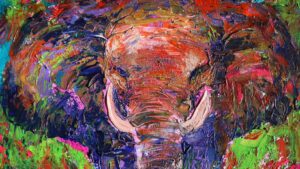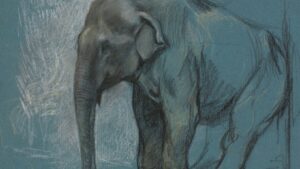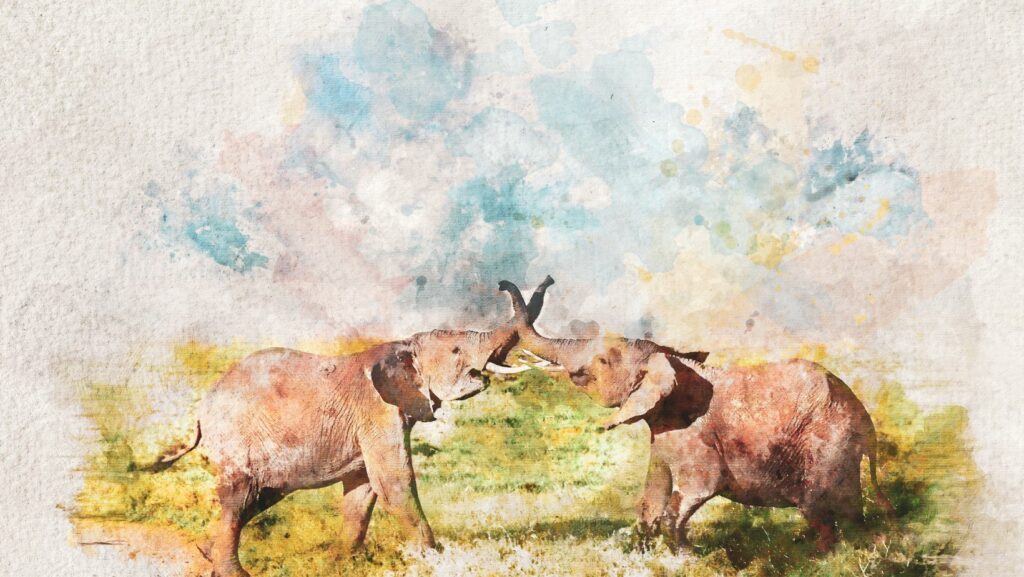There’s an old saying that goes, “How do you eat an elephant? One bite at a time.” The same principle applies to drawing an elephant. It may seem like a daunting task, but with a little patience and a step-by-step approach, it’s entirely doable.
In this article, we’ll demystify the process of drawing an elephant, breaking it down into manageable parts. Whether you’re a seasoned artist seeking to perfect your technique or a beginner looking for a fun challenge, you’ll find this guide helpful. So grab your pencil, let’s embark on this artistic journey together.
Drawing:k4ihdmzbtqg= Elephant

A key aspect of drawing an elephant involves knowing its anatomy. An elephant, notable for its large size, possesses a set of distinct features. Broad and massive, an elephant’s body exudes strength and grandeur. Specifically, the bulging back, weighty form, and wrinkled skin represent the quintessential characteristics.
Head, trumpeted Nose, and large Ears dominate an elephant’s facial features. Interestingly, the head, around one-third the size of the body, balances atop a stout neck. The nose, a remarkable fusion of the upper lip and nostril, forms a long, versatile trunk employed for diverse tasks.
Giant Tusks flank the trunk, curving outward in an arc that can reach lengths up to 10 feet in male elephants. Comparatively, the ears provide an effective cooling function. Large, thin, and veined, they disperse heat, especially vital in the African elephants, the larger of the elephant species.
Concentrating on these physical attributes can assist in creating a realistic drawing, enhancing both the likeness and the overall effect. Observing real elephants, utilizing references such as images or videos, and practicing drawing techniques can reinforce the understanding of their anatomy. Maintaining attention to the fascinating blend of size, form, and function is indispensable in the pursuit of drawing an elephant.
Tools and Materials for Drawing Elephants

Crafting realistic elephant illustrations requires certain tools and materials. One mainstay in most artist’s repertoire remains the high-quality drawing pencil. Varied lead strengths, such as HB for general sketching, 2B for darker lines, and 4H for light areas, offer the artist a range of shades and lines. Another asset, a blending stump, smooths pencil strokes, creating less texture.
Erasing pencils supply precision in removing marks and refining drawings, while kneaded erasers are ideal for lightening and creating gradients in the image. Drawing paper marks a critical component, acting as the canvas for the illustration. Acid-free, heavy weight paper proves excellent for capturing intricate details.
With tools in hand, the artist turns to reference materials such as photographs or even real-life observations to bring the elephant to life on paper. Realistic portrayals hinge on understanding the animal’s anatomy and emphasizing unique physical characteristics. Adequate preparation, accurate tools and good practice serve as key elements in this creative process.
Step-by-Step Guide to Drawing an Elephant

Emphasizing the strength and grandeur, artists can first sketch a basic outline of the elephant’s body. Diving deep, they need to focus on adding details to the head, defining the trunk, ears, and tusks. Tools such as high-quality drawing pencils and blending stumps come in handy here.
Precision in detailing can be achieved, stating it must, by using erasing pencils and kneaded erasers. High-quality, acid-free heavy weight paper serves as the ideal canvass to capture all the intricate details. Drawing anatomy from real-life observations and references plays a pivotal role for enhancing realism and overall effect. Therefore, precise preparation, usage of the accurate tools, and continual practice form the essence of this step-by-step guide to drawing an elephant.
Styles of Elephant Artwork
Drawing an elephant isn’t as daunting as it seems. The article has broken down the process into manageable steps, highlighting the importance of understanding elephant anatomy and observing real-life references. It’s all about capturing their strength, facial characteristics, and using the right tools to bring your drawing to life.
Remember, creating realistic elephant artwork is a journey. It’s not just about the final piece, but the process of understanding, observing, and practicing. Whether you’re a novice or an experienced artist, there’s always room for improvement. So pick up your tools, observe, practice, and let your creativity flow. The world of elephant artwork awaits you. Let’s make the most of it and create some truly stunning pieces of art.



